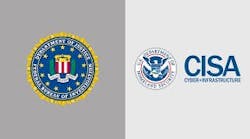While most Americans focus on the threat of another aviation attack like the Sept. 11 hijackings, the U.S. government is quietly working to prevent something far worse -- a catastrophic strike with a weapon of mass destruction
Five years after the Sept. 11 attacks killed nearly 3,000 people, Homeland Security Secretary Michael Chertoff has once again bolstered aviation security in high-profile fashion in response to a failed plot in Britain to blow up U.S.-bound planes
But in a sign he fears other, more devastating attacks, Chertoff has also made his department focus on worst-case scenarios which could include nuclear or biological weapons
Some analysts say the government is still not spending enough money to address such threats
"An improvised nuclear device would be devastating with potentially hundreds of thousands of casualties and ... the damage would run in the trillions of dollars," said Vayl Oxford, director of the department's Domestic Nuclear Detection Office
"One of the concerns we have is that a weapon could be manufactured inside the U.S.," Oxford said. His office is trying to protect against such a U.S.-built weapon being brought into locations such as major cities where it could cause a great deal of damage
The department this year began buying modernized equipment to scan cargo at ports and border cities for nuclear material -- with equipment still in use at many sites, ordinary substances such as cat litter can set off radiation alarms
Another concern is what experts fear is becoming a global nuclear arms race
"That just increases ... the potential that the technology will find its way to terror organizations," said P.J. Crowley, a spokesman for the U.S. government and military for 28 years who is now director of national defense and homeland security at the Center for American Progress
On the biological-weapons front, the department is building a secret restricted laboratory to study infectious diseases such as smallpox and other pathogens that could be turned into weapons, five years after deadly anthrax-tainted letters were mailed to U.S. political and media targets
"The real danger is that with biological materials you could kill large numbers of people," said John Vitko, director of biological countermeasures. At the laboratory outside Washington, scientists will try to determine what can be used as a weapon and how hard it is to produce
"Most of what we're doing is trying to get a better understanding of existing agents," Vitko said. "It's still not well-known how much agent it takes to make you or me sick if we either inhaled it or if we eat it." Crowley said the Homeland Security Department needs more money to adequately prepare for an attack with mass-destruction weapons. It plans to spend about $536 million in the next fiscal year on preventing nuclear terrorism, while $337 million is earmarked for biological countermeasures
"I am convinced that DHS is underfunded," he said. "If we do believe these risks are imminent, then we've got to get to a better place faster. But the level of resource being given ... we're on a five or 10 year track and I'm not sure we have that much time." Despite the department's work on threats of greatest consequence, analysts said militants have traditionally targeted airplanes -- either by hijacking them, putting a bomb on them, or using them as suicide weapons as al-Qaeda did on Sept. 11
"The reality is, the threat we face every day is the threat to commercial aviation," said Brian Jenkins, RAND senior terrorism analyst and author of a recent book on the threat to the United States

